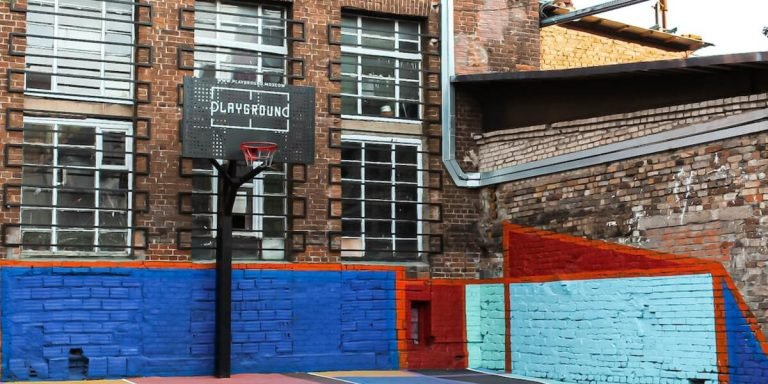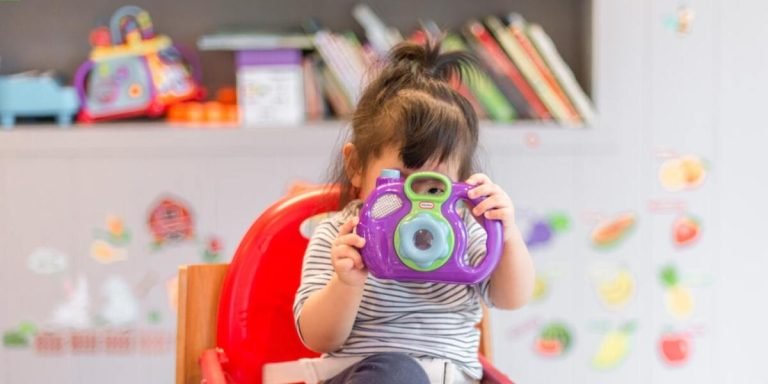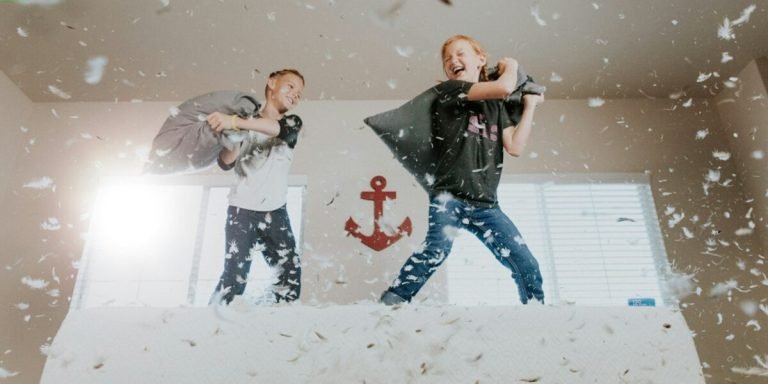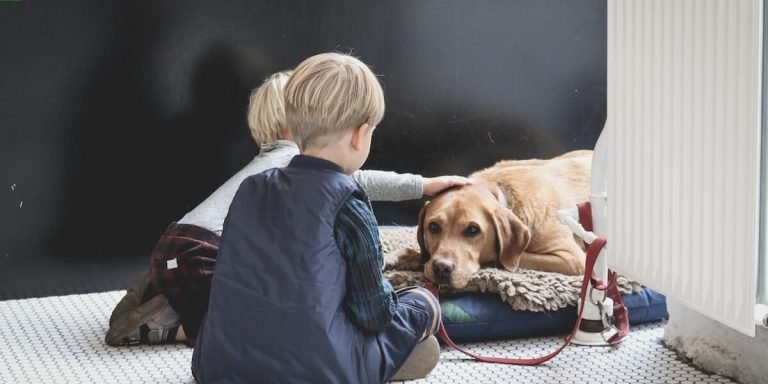Crafts for Kindergarten: Igniting Creativity and Fun in Learning
Exploring the world of crafts for kindergarten can unlock a treasure trove of learning opportunities. This form of activity-based learning helps in igniting creativity and fun while keeping education at its core. Children are not just building with paper, glue, or clay; they’re constructing knowledge and developing essential skills that set the stage for formal schooling.
Indeed, it is through these engaging hands-on experiences where young learners find joy in discovery and develop a love for learning. The use of arts & crafts transcends traditional methods by introducing tactile stimulation which aids effective comprehension. While we often view them as simple leisure activities, their impact extends much further – enhancing motor skills, fostering critical thinking and instilling confidence among children right from Kindergarten.
Did you know?
Did you know that crafting in kindergarten not only boosts creativity, but also aids motor development? Research shows fine motor skills nurtured by crafts are critical for writing readiness.
Exploring the Benefits of Activity Based Learning in Early Education
Activity Based Learning (ABL) in early education has been gaining traction, proving to be a major player in the holistic development of kindergarteners. This innovative learning method encourages children to engage with educational material via crafts and other activities that ultimately bolster their understanding beyond theoretical knowledge.
Talking about ‘crafts for kindergarten,’ we see a fascinating mix of hands-on creativity and digital innovation within activity-based learning. For example, kids improve their motor skills and visual-spatial abilities by creating paper animals. They enhance problem-solving capabilities and tech competency when they build 3-D models using special software.
Augmented reality apps, furthermore, animate craft creations on the screen, providing excitingly novel and impactful real-time expressive outlets.
In conclusion, Technology aids ABL’s foundational principle – learn through doing – adding depth and breadth where textbooks might fall short!. Therefore Integrating technology within activity-based learning not only imbues practicality but also aligns childhood education with current generation’s digitized environment preparing them towards future ready skillsets!
The Role of Crafts in Developing Fine Motor Skills for Kindergarteners
Today’s kindergarten classrooms are buzzing with activity-based learning approaches integrating technology into teaching strategies. The use of ‘crafts for kindergarten’ proves to be a powerful tool promoting both physical development as well as cognitive abilities.
Firstly, crafting activities enhance kindergartner’s hand-eye coordination. When they thread beads or cut out shapes from paper under supervision – each move requires precision which aids their ability to coordinate what they see with what their hands do – a crucial skill required even in complex technological interfaces.
Secondly, tasks like holding crayons or using safety scissors strengthen tiny muscles in your child’s hands preparing them better at handling delicate equipment such as touch-screen devices or styluses on digital boards effectively without causing damage- thus paving way towards successful tech-integration later.
Thirdly, crafts also involve following specific instructions often delivered visually through projectors or tablets where kids learn not just craft making but important lessons about understanding visual cues and commands – transferrable skills while working on edutech platforms further down the line.
Cognitive Growth Through Creativity: How Crafting Aids Development
Activity-based learning, particularly involving crafts for kindergarten, offers a dynamic approach to education in early years. Integrating this method with technology can lead to substantial cognitive growth and development among children.
Crafting exercises are much more than just fun-filled activities. They also play an important role in shaping young minds by helping them understand concepts better while boosting their creativity and imagination skills simultaneously.
Let’s explore how activity-based learning through crafting aids child-development:
1. Enhances Fine Motor Skills: Crafting involves handling various tools like scissors, paintbrushes or clay moulds which require precise hand-eye coordination thus refining fine motor skills of kids.
2. Boosts Creativity: Making crafts provides room for self-expression hence encouraging creative thinking from an early age.
3. Stimulates Cognitive Development: While engaged in craft-oriented tasks such as arranging shapes or mixing colors together to create something new requires critical thinking thereby stimulating cognitive functions.
As we progress further into digitalization age; integrating modern technology with conventional teaching methodologies opens up unlimited possibilities especially when its about fostering active-learning environment at school settings .
Innovative Craft Projects Tailored for Kindergarten Readiness
As educators and parents, understanding the significant role of craft projects in enhancing kindergarten readiness cannot be overstated. In recent years, technology integration has redefined Activity-Based Learning (ABL), particularly for young learners. Today’s kindergartners are shaping their creativity like never before with innovative crafts that not only challenge but also spark an interest in learning.
While traditional craft projects have been a staple in early education classrooms; integrating them with technology-driven approaches can yield remarkable outcomes. For example, children may engage in crafting handmade designs using tangible materials then transform these ideas into digital renderings through creative software programs or apps developed specifically for youngsters’ user-friendly interaction. This blend of physical creation and digital exploration promotes dexterity along with visual-spatial reasoning – essential skills required to navigate our increasingly technological world.
Furthermore, interactive online platforms present new avenues for ‘crafts-for-kindergarten’, allowing teachers to use virtual reality instruments or augmented reality elements during art-making sessions — making it appealing and realistic at the same time! These cutting-edge resources stimulate curiosity while fostering problem-solving capabilities among kids which inadvertently prepares them better for their academic journey ahead.
Sensory Exploration with Age-Appropriate Arts and Crafts Materials
As we prepare our children for kindergarten in 2023, it’s essential to introduce them to crafts that not only stimulate their creativity but also contribute significantly towards improving important skills required at this crucial educational stage. Activity-based learning through “crafts for kindergarten” becomes pivotal in achieving these developmental milestones.
One compelling way of accomplishing this is by promoting sensory exploration with age-appropriate arts and craft materials. Sensory play, where kids use their senses—touch, taste, smell, sight and hearing—is a vital part of development because it contributes greatly to the cognitive growth process in young minds.
Craft projects are an excellent method for facilitating such active engagement—involving hands-on activities that encourage toddlers’ interaction with various textures like rough paper or smooth clay can enhance fine motor skill advancement. Children get familiarized with different shapes and colors which improves memory retention too.
Moreover engaging youngsters into ‘creating something new from scratch’- whether be it drawing animals on papers or making sculptures out of clay- facilitates creative thinking as well as cultivates problem-solving abilities; both critical components needed for success beyond preschool classrooms!
Today’s parents keenly look forward to integrating technology amidst traditional kinds of activity-oriented engagements during early years education sessions using online resources offering interactive art project ideas designed specifically keeping kindergarteners’ interest levels intact! Crafting digital stories together emerge fun-filled bonding alongside incorporating computer literacy within tender-aged learners thus bridging gap between conventional modes & advanced teaching methodologies efficiently!
Integrating Basic Math Concepts through Themed Crafting Activities
Craft activities are not just for fun; they can also be a great learning tool. Especially when it comes to integrating basic math concepts, crafty projects pave the way for interactive and engaging sessions that help in kindergarten readiness. In this day and age of technology integration in education, practical applications through crafts have proven successful.
One innovative approach is using themed crafting activities which appeals to little ones’ curiosity while subtly teaching them math fundamentals like shapes, sizes or counting principles.
Take an example of a project involving “animal-themed” crafts for kindergarten students where each kid gets hands-on experience making various animals out of geometrical foam cut-outs. It’s shape recognition cleverly disguised as an art expedition into the animal kingdom!
Or how about size-estimation? A “Giant vs Miniature” craft day would do wonders here: kids could make large dinosaurs & tiny insects both from paper mache – letting elementary comparison concepts take root naturally.
Strategies for Implementing Activity Based Learning Through Crafts
In the ever-evolving landscape of kindergarten education in 2023, combining activity-based learning with crafts has emerged as a winning strategy to foster hands-on knowledge and creativity. With technology being integrated into every aspect of our lives, it’s only fitting that early childhood education would also benefit from this digital boon. The use of craft activities not just serve to keep little minds engaged but can significantly aid educators in creating stimulating environments where young learners get a chance to interact actively rather than passively consuming information.
Incorporating augmented reality (AR) tools in activity-based learning through crafts can significantly enhance the experience. AR tools animate children’s craft creations by superimposing computer-generated images onto them. For example, paper butterflies crafted by kindergarteners can flutter to life when viewed through an AR tool.
These immersive experiences spark curiosity and provide clear insights into nature within the classroom’s confines.
Moreover, using pedagogical approaches such as Project-Based Learning (PBL), teachers are integrating subjects like mathematics and science within creative projects involving crafts for kindergarteners too. By constructing math models with lego blocks or painting solar system artwork—children learn concepts practically amidst fun-filled sessions.
Encouraging Cooperative Play and Social Skills with Group Craft Projects
Integrating technology in education is crucial, especially when it comes to activity-based learning. While traditional methods have their merits, the addition of crafts for kindergarten can significantly enhance cooperative play and social skills.
Group craft projects provide an excellent avenue for introducing social skills and collaboration. They create a fun-filled platform that allows children to actively engage with each other while creating something tangible, all within a learning environment. Here’s how we can effectively implement this in our educational system:
1. **Pick Appropriate Projects:** First off, choose group craft projects that suit your students’ ages and interests to keep them engaged wholly throughout this hands-on experience.
2. **Digital Craft Ideas:** Utilize digital platforms as sources of inspiration for craft ideas—consider Pinterest boards or online art tutorials on YouTube Kids which cater specifically to kindergarteners.
3a: **Online Collaboration Tools**: Introduce apps like Trello or Asana explicitly designed for project management; even youngsters can pick up simplified usage quickly! These applications facilitate task delegation among team members highlighting individual duties towards collective achievement.
Assessing Learning Outcomes with Reflective Crafting Sessions
Craft-based activities have proven to be an effective tool in reinforcing learning among kindergarten kids. There’s more than drawing, coloring and making cute paper animals; it is about giving your tiny tots a sense of achievement while they learn something new every day through their crafts project.
Reflective crafting sessions form the cornerstone for assessing learning outcomes when implementing activity-based learning using crafts. Here we will delve into how you can make these craft sessions reflective, thereby aligning them with the targeted educational goals.
1. Start by setting clear objectives: Before initiating any craft assignment, specify what skills or knowledge children would gain from it. For instance, if working on papier-mâché planets involves understanding sizes relative to each other and recognizing colors – make sure this purpose gets conveyed clearly.
2. Make room for craftsmanship discussion: Encourage students after completing a task to talk about their experience during creation – challenges faced, techniques utilized etc,. This promotes critical thinking as well imparts deeper insights into concepts touched within assignments nature.
3 . Draw connections between creations and lessons learned: After completion of tasks ask them what relation does their artwork hold with topics studied previously? Asks questions which bridge gap between art created & syllabus notions thus helping reinforce learnt chapters.
Conclusion
So, there you have it. By infusing fun and creativity with crafts for kindergarten in their education journey, we not only ignite a love of learning but also develop essential life skills from critical thinking to coordination. Remember that – as parents or educators – your role is much like the potter shaping clay on his wheel; every rotation could carve an impression!
So why keep things monotonous when they can be vibrant?
Whether you’re looking for more artsy ideas like these “crafts for kindergarten” or require guidance on another aspect related to childhood education, remember our website holds an abundance of resources tailored just for you. It’s time we don’t just educate children but inspire young minds because happy kids learn better! We encourage you to dive into other sections on this platform where inspiration meets information – all designed to make your task easier while making learning exciting.







